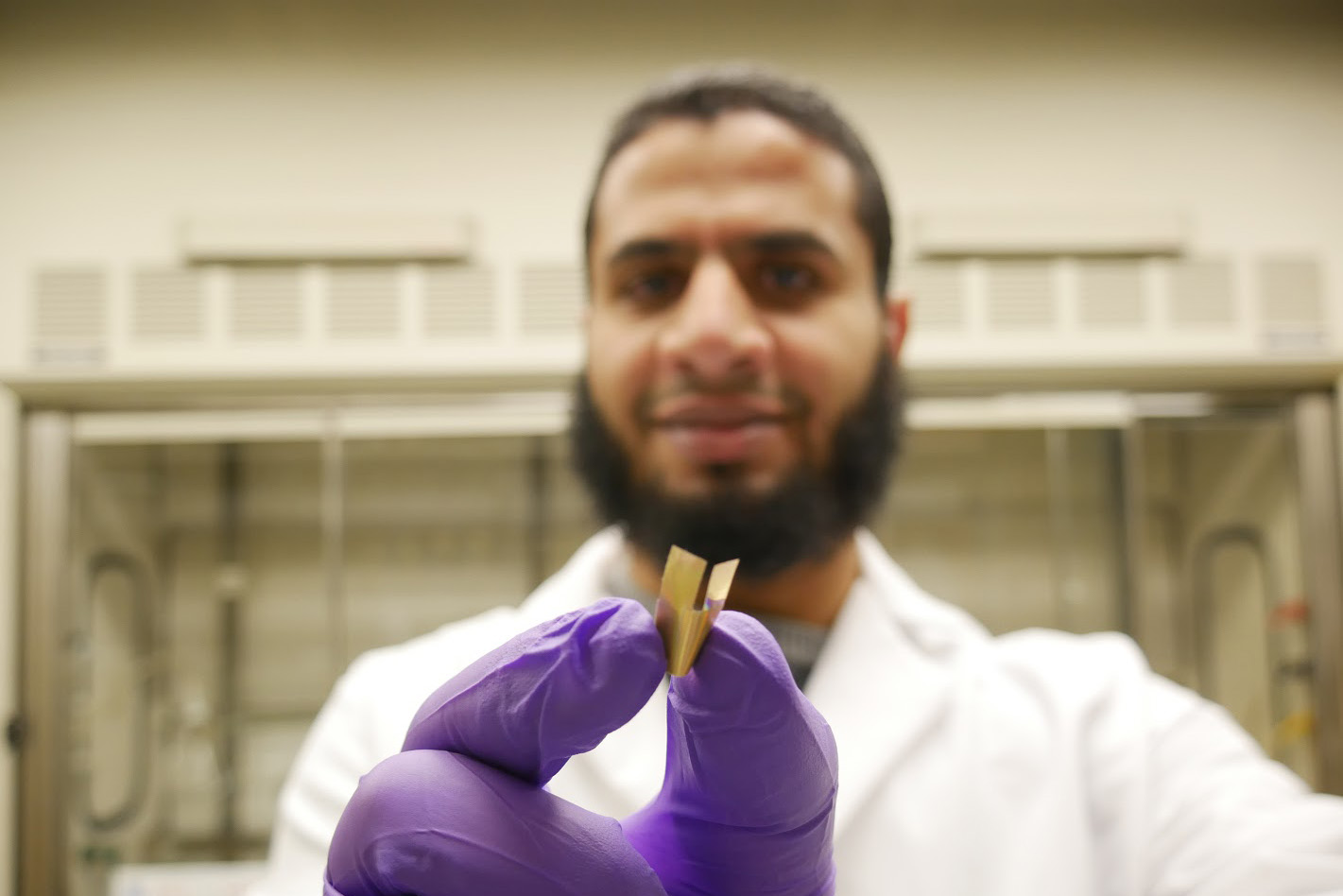A UConn graduate student is developing a new micro-scale power source that is significantly smaller and more efficient than the batteries currently used in most cardiac pacemakers today.
Working under the tutelage of chemistry professors James Rusling and Challa Kumar, Ph.D. student Islam Mosa is developing an implantable electronic device that draws its power from an ultra-small, ultra-thin supercapacitor. The research appears in the May 9 online issue of Advanced Energy Materials.
“Our supercapacitors are thinner than a human hair,” says Mosa, who is pursuing his doctorate in the Department of Chemistry in the College of Liberal Arts and Sciences. “They are also very stable. They could be designed to power a cardiac pacemaker for the life of the patient.”
Implantable cardiac pacemakers have extended the lives of millions of people since they were first introduced in the late 1950s. But current models are not without their drawbacks. They are powered by bulky batteries that require surgery when their charge weakens, and they need to be replaced. This poses a risk for infection. The batteries’ internal electronic components also can be toxic to the body should they ever leak.
About the size of a postage stamp, Mosa’s power source is bendable and looks like a thin piece of film. In lab tests, the device has also been shown to be non-toxic to living cells. This feature is possible, Mosa says, because the device uses the patient’s own blood serum as an electrolyte rather than draw its power from a potentially toxic lithium-ion battery, which is the preferred power source for most cardiac pacemakers today.
“We charged and discharged the device in a petri dish to see what happened to cell cultures, and surprisingly it had no effect at all,” Mosa says. “Because the supercapacitor components are compatible with the biological environment, even if it leaks, it would have no detrimental effect on the patient.”
The power system’s efficiency allows it to maintain a charge for a long period of time, a feature that could make it suitable for other bioelectronic devices such as implantable neurostimulators, which are used to treat some patients with Parkinson’s disease.
“The loss of capacity over time is very small, which makes these supercapacitors very promising to power biomedical devices over the long term,” says Mosa, who has been working on the device for the past three years.
Exactly how the power system works and how a patient’s biofluids serve as an electrolyte is still proprietary. Mosa and the research team expect more details to be released soon once their research paper is accepted for publication.
Professor Rusling is an expert in bioanalytical chemistry, protein-based cancer diagnostic sensors, and toxicity screening sensors. Professor Kumar is an expert in biological materials. Also participating in the research were UConn chemistry professor Ashis Basu, an expert in molecular biology; Professor Richard Kaner, a distinguished biochemist and polymer expert from UCLA; and Maher El-Kady, a postdoc in the Kaner lab.
While working on his doctoral dissertation, Mosa recently received a top honor for succinctly conveying the core concepts of his supercapacitor research in an international competition sponsored by Universitas 21 (U21), a network of research universities around the globe.
Mosa won the People’s Choice Award for a three-minute video presentation of his doctoral thesis, capturing a record number of online votes. More than 1,000 graduate students from universities as far away as Australia, New Zealand, China, Singapore, South Africa, and the UK competed in the so-called 3MT event this year.
Mosa represented UConn in the U21 international competition after placing first in a contest sponsored by the Department of Chemistry and then winning a campus-wide event in September.
“Islam is a very accomplished young scientist and a powerful communicator,” says Kent Holsinger, UConn’s dean of graduate students and vice provost for graduate education.“His work may improve the lives of thousands who depend on cardiac pacemakers. The 3MT competition helped him develop the skills to describe complex, technical details of his work in language we can all understand, and we are very proud to have him represent UConn in the 2016 U21 competition.”
Mosa says his award-winning presentation wouldn’t have been possible without the support of Rusling, Kumar, and others on the research team.
“180 seconds to tell the story of my thesis research to a broad audience while making each word count was undoubtedly one of the biggest challenges I have had in my graduate career,” he says. “I’m thrilled for all of the skills I have gained through this amazing experience. I encourage all graduate students to participate. It’s a great learning opportunity.”



